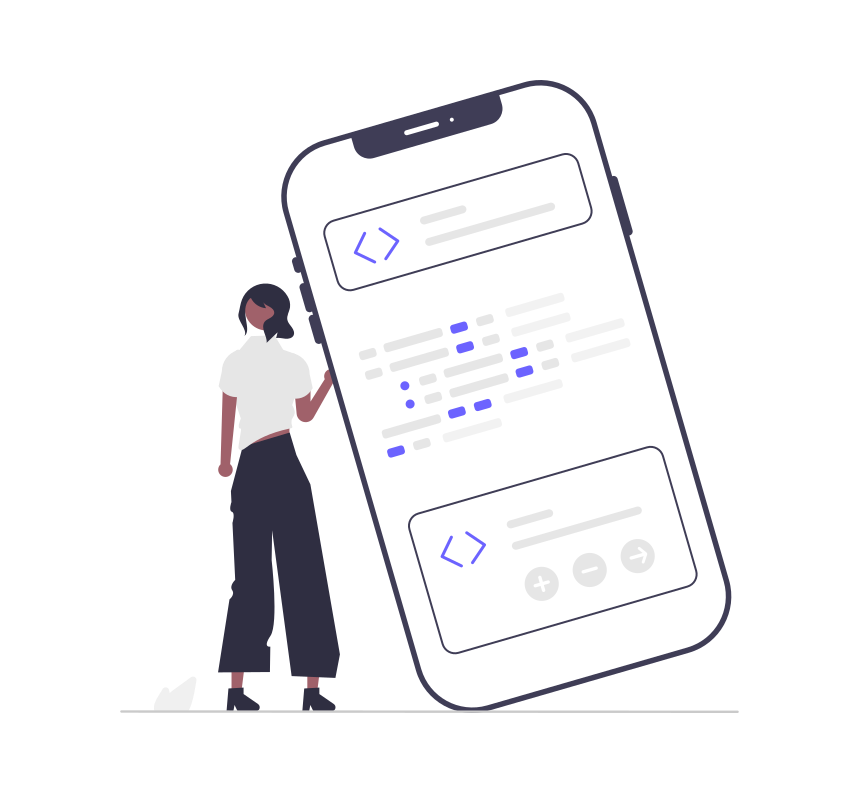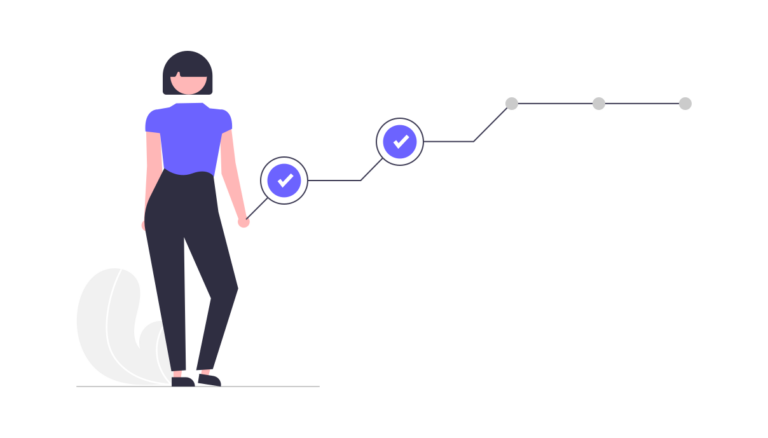
Roadmap for Full Stack Web Developer

Contents
Introduction
If you’re aiming to become a full stack web developer, you’re in for an exciting journey that involves mastering both front-end and back-end technologies. This roadmap for becoming a full stack web developer provides a structured approach to learning essential skills, from foundational concepts to advanced techniques. By following this guide, you’ll build the expertise needed to create comprehensive web applications and advance your career in web development.
Begin with Core Web Development Skills
To start your journey, focus on mastering the core skills required for web development.
- Understand HTML: HTML (HyperText Markup Language) is the basic building block of web pages. Learn how to use HTML to structure content with elements such as headings, paragraphs, lists, and forms. Mastering HTML is essential for any full stack web developer.
- Get Proficient with CSS: CSS (Cascading Style Sheets) is used to style and layout your web pages. Learn the fundamentals of CSS, including selectors, properties, and how to use Flexbox and Grid for layout design. Effective use of CSS helps create visually appealing and responsive web designs.
- Learn JavaScript Basics: JavaScript is crucial for adding interactivity to your web pages. Start with core concepts like variables, data types, functions, and control structures. Advance to manipulating the DOM (Document Object Model), handling events, and performing asynchronous operations.
Develop Front-End Expertise
Building engaging and dynamic user interfaces is a key part of full stack web development.
- Explore Front-End Frameworks: Familiarize yourself with popular front-end frameworks and libraries such as React, Angular, or Vue.js. These tools simplify the development of complex user interfaces and enhance user experience.
- Master Responsive Design: Ensure that your web applications work well on all devices by learning responsive design principles. Use media queries to create layouts that adapt to various screen sizes, providing a seamless experience across mobile, tablet, and desktop devices.
- Get to Know CSS Preprocessors: CSS preprocessors like SASS or LESS can streamline your styling process. They offer features like variables, nesting, and mixins, which help you write more maintainable and efficient CSS code.
Master Back-End Development
The back-end is where server-side logic and data management take place. Gain the skills needed to handle these tasks effectively.
- Learn a Back-End Language: Choose a back-end language such as Node.js, Python, Ruby, or PHP. Learn how to process server requests, manage sessions, and handle data. This knowledge is crucial for any full stack web developer.
- Understand Web Frameworks: Get acquainted with web frameworks relevant to your chosen back-end language. For example, if you use Node.js, learn Express.js. If you prefer Python, explore Django or Flask. These frameworks help build robust server-side applications and APIs.
- Work with Databases: Gain proficiency in working with databases. Learn SQL for relational databases like MySQL or PostgreSQL, and explore NoSQL options like MongoDB. Understanding database design and CRUD (Create, Read, Update, Delete) operations is essential for managing application data.
- API Development: Learn to design and implement APIs (Application Programming Interfaces). Study RESTful API principles to enable smooth communication between your front-end and back-end. Effective API development is a cornerstone of full stack web development.
Integrate Front-End and Back-End
Combining front-end and back-end skills is crucial for developing complete web applications.
- Full-Stack Integration: Learn how to integrate front-end frameworks with back-end services. This involves making API requests from the front-end, managing data exchanges, and ensuring cohesive functionality between user interfaces and server-side logic.
- Implement Authentication and Security: Protect your applications by implementing authentication and security measures. Learn about user authentication, authorization processes, and data encryption to safeguard sensitive information and maintain secure applications.
Optimize Development Practices
Efficient development practices enhance your workflow and productivity as a full stack web developer.
- Master Version Control: Use Git for version control to track changes, collaborate with others, and manage different versions of your codebase. Version control is an essential skill for managing your projects effectively.
- Utilize Build Tools and Automation: Leverage build tools like Webpack or Gulp to automate tasks such as code compilation and asset management. Automation improves your efficiency and ensures a smoother development process.
- Adopt CI/CD Practices: Understand and implement continuous integration and continuous deployment (CI/CD) practices. Set up CI/CD pipelines to automate the testing and deployment of your applications, ensuring that updates are delivered seamlessly.
Gain Practical Experience
Applying your skills through hands-on projects is key to reinforcing your knowledge and showcasing your abilities.
- Work on Personal Projects: Develop personal or open-source projects to practice your full stack skills. Building real-world applications allows you to apply what you’ve learned and create a portfolio that demonstrates your expertise.
- Seek Internships or Job Opportunities: Look for internships or entry-level positions to gain professional experience. Practical work provides valuable insights into industry practices and helps you build a strong career foundation.
- Build a Portfolio: Create a portfolio to highlight your projects and skills. Include detailed descriptions, technologies used, and links to your code repositories. A well-crafted portfolio is crucial for attracting potential employers and clients.
Stay Updated with Industry Trends
Keeping up with the latest trends and technologies is essential for staying competitive in web development.
- Engage in Continuous Learning: Stay informed about new technologies, frameworks, and best practices in web development. Read industry blogs, attend webinars, and take online courses to keep your skills current.
- Network with Professionals: Connect with other developers and join professional communities. Networking provides insights into industry trends, new tools, and job opportunities.
- Embrace Emerging Technologies: Stay open to learning about and adopting new tools and technologies. Being adaptable ensures that your skills remain relevant and that you continue to grow as a full stack web developer.
Conclusion
- Master Core Web Development Skills: Build a strong foundation in HTML, CSS, and JavaScript to create and style web pages and add interactivity.
- Develop Front-End Expertise: Gain proficiency in front-end frameworks, responsive design, and CSS preprocessors to build engaging user interfaces.
- Master Back-End Development: Focus on learning a back-end language, web frameworks, databases, and API development to manage server-side logic and data effectively.
- Integrate Front-End and Back-End: Connect your front-end with back-end services, and implement security measures to protect your applications.
- Optimize Development Practices: Utilize version control, build tools, and CI/CD practices to enhance your development workflow and productivity.
- Gain Practical Experience: Work on projects, seek internships, and build a portfolio to showcase your skills and experience.
- Stay Updated with Industry Trends: Continuously learn about new technologies, network with professionals, and embrace emerging tools to remain competitive.
Following this roadmap for becoming a full stack web developer will equip you with the necessary skills and knowledge to succeed in the field. Embrace the learning process, stay dedicated, and apply your skills to real-world projects for a successful career in web development.



